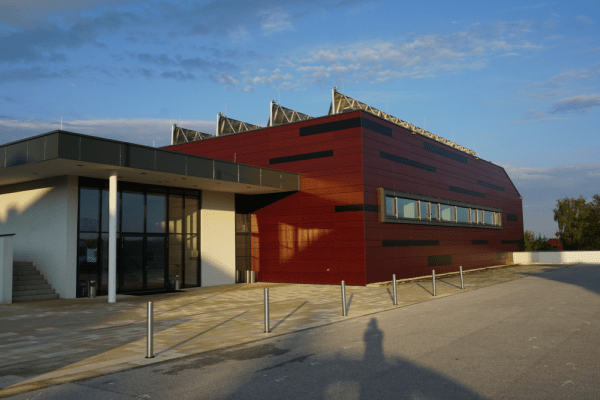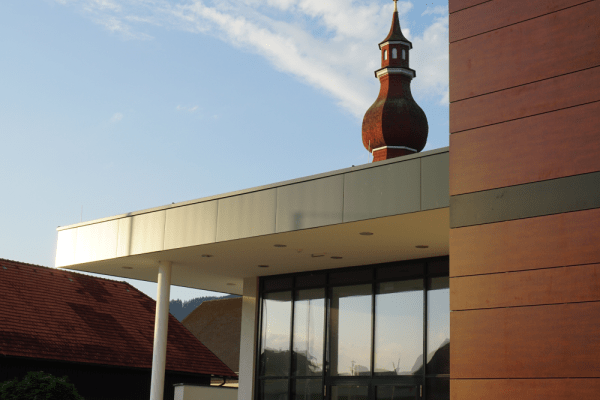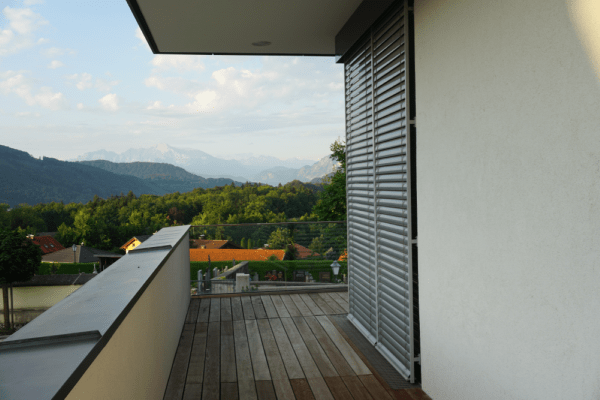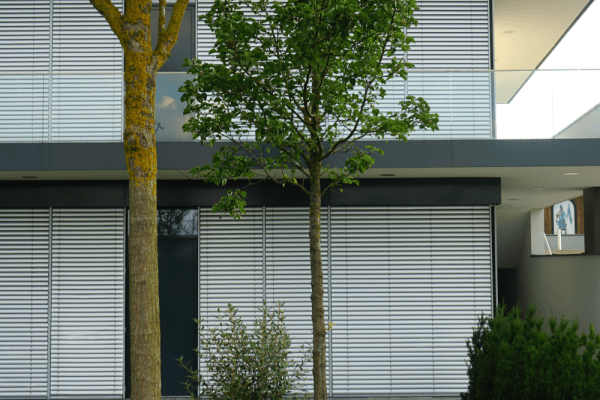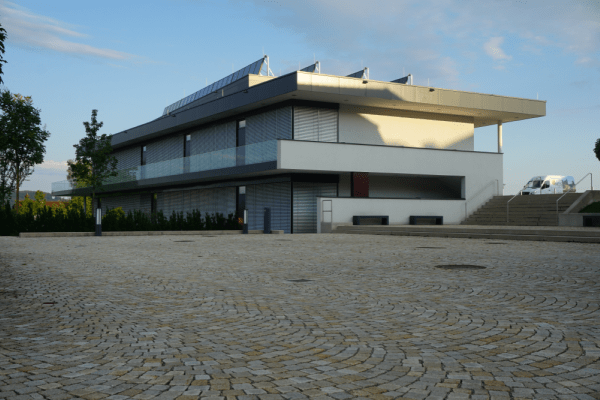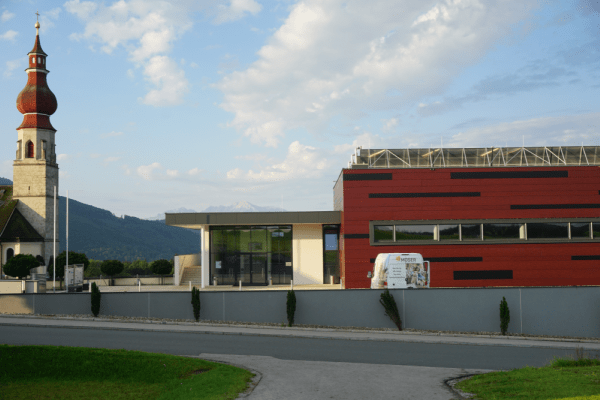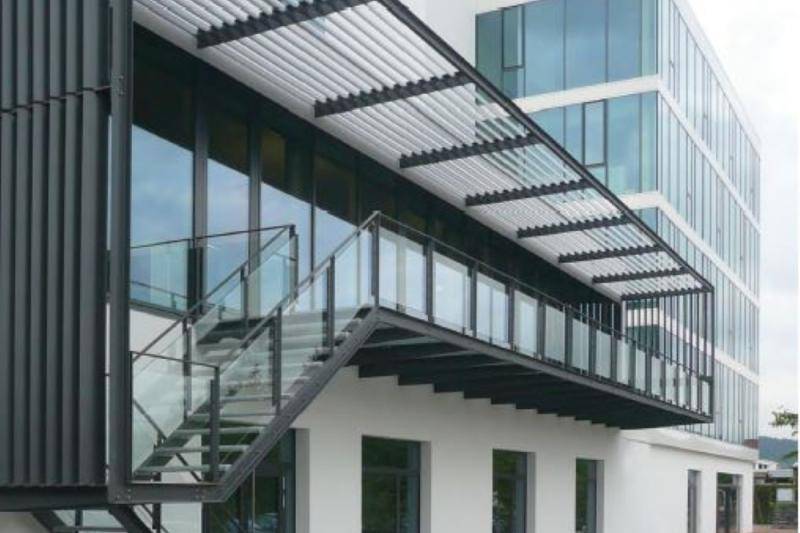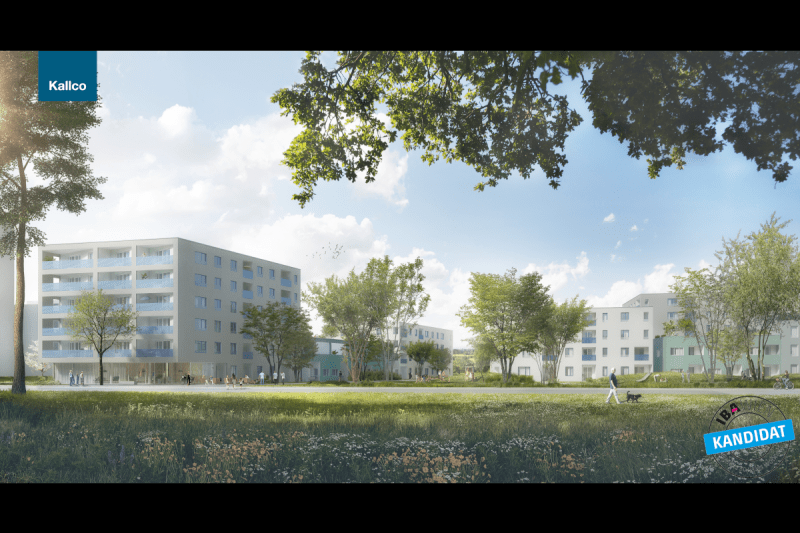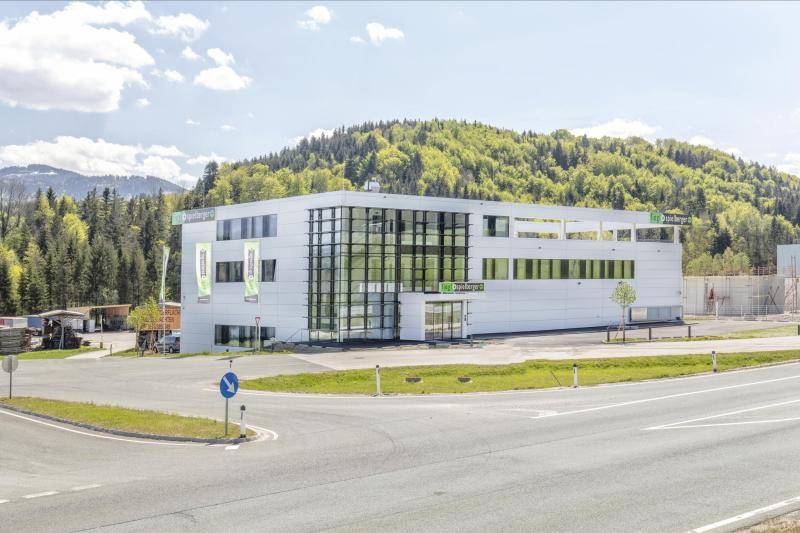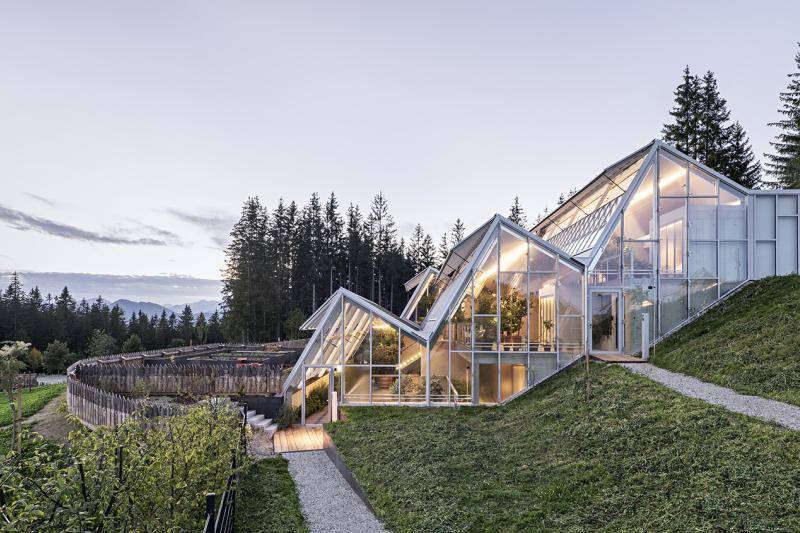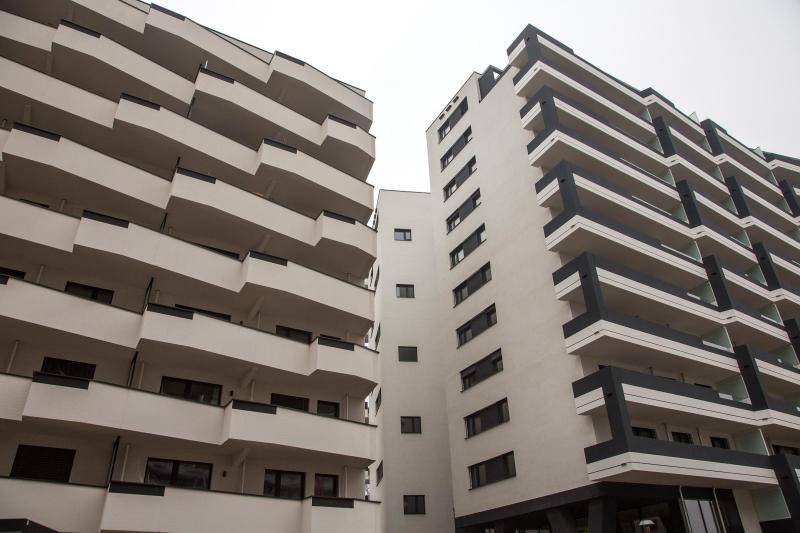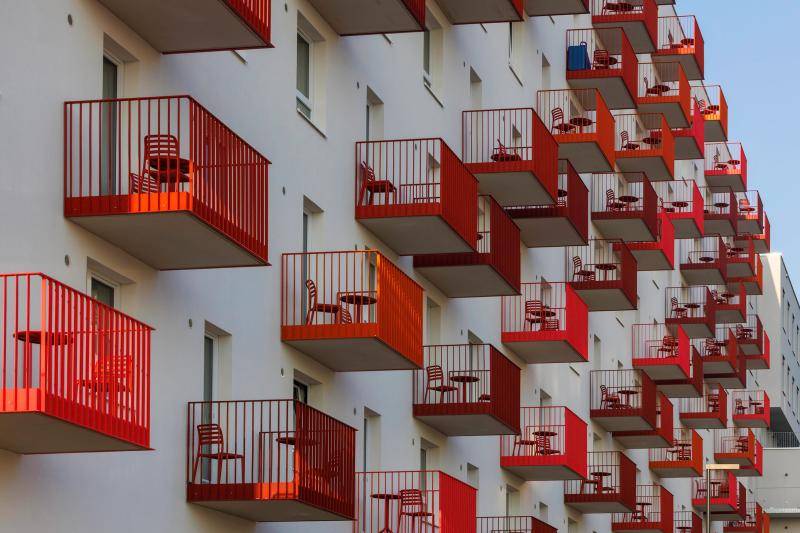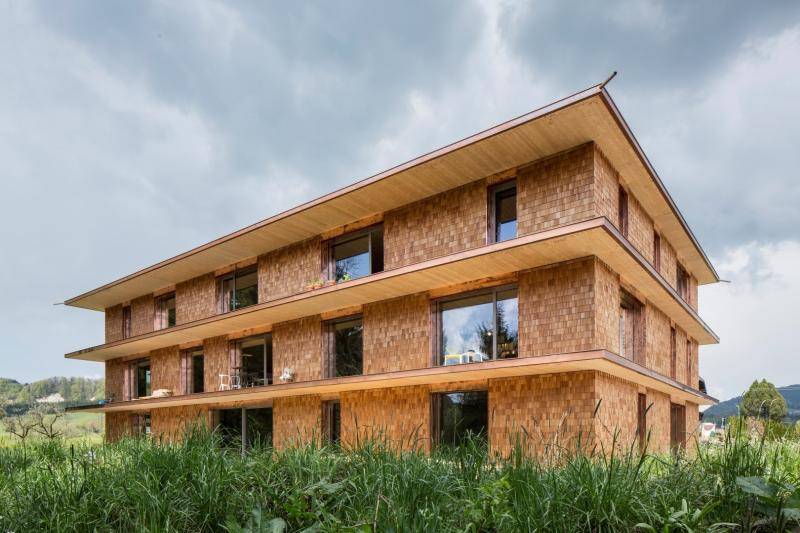Cultural center Hallwang
The 400-guest multi-purpose hall was built in 2013 and serves the community for theater and music evenings, cabaret programs, balls and seminars. Special is not only the location with a view of the Salzburg basin to the Tennen mountains, but also the sophisticated house and energy technology concept.
Community of Hallwang
2013
Resmann & Schindlmeier
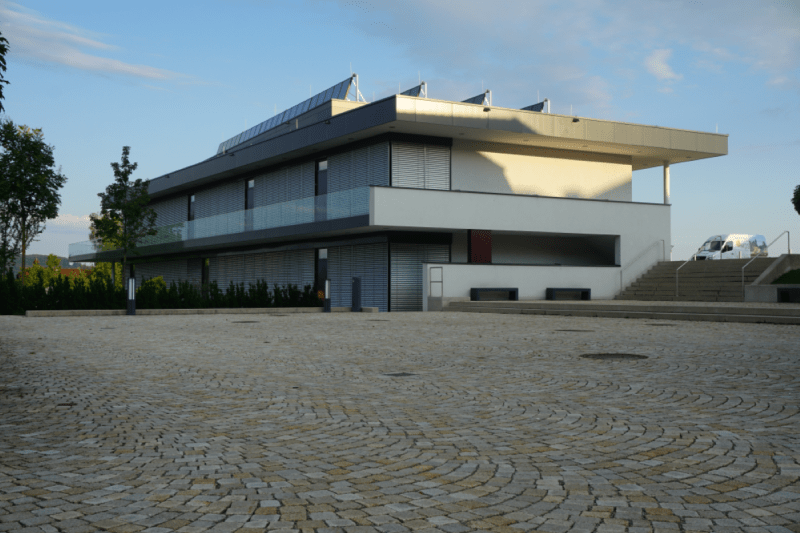
The 400-guest multi-purpose hall was built in 2013 and serves the community for theater and music evenings, cabaret programs, balls and seminars. Special is not only the location with a view of the Salzburg basin to the Tennen mountains, but also the sophisticated house and energy technology concept:
To cover the total annual heat demand for heating and hot water of about 40,000 kWh, 140 m² of large-area thermal collectors were installed on the flat roof at an installation angle of 70°. The hot water preparation is to be covered all year round to 100% by the solar plant. In the months March to November the surplus solar energy is supplied to the adjacent tourism enterprise Gasthof Kirchbichl.
The gained solar energy is introduced into the concrete heat storage tank to the extent of 615 m³ via a hot water buffer tank and a heating buffer tank, each with high-quality thermal insulation. Furthermore, the non-activated rising masonry serves as additional storage mass. Via this total storage mass, approx. 15% of the summer energy surplus can be transferred into the heating period and the heating demand in winter can be covered. The existing rainwater retention basin with a usable volume of 70,000 l is used via a heat exchanger for a possible cooling case after a summer heat period.
An integrated planning approach was essential for the defined goal of low construction costs. Close cooperation between the project operator, architect, user and implementation planner and the high degree of prefabrication of various building elements (e.g. ceiling construction) enabled an extremely short construction period. The construction costs for the building as well as for the system technology are only slightly higher than for a standard building with conventional heating technology. However, the great advantage for the building owner and user is the fact that, in contrast to other buildings, no energy costs are incurred, but rather earnings are contributed to the municipal coffers. It is also worth mentioning that the omission of a conventional heat generator results in significantly lower maintenance costs, and in the long term there is no need to budget for the cost of replacing the heat generator. (Text @ FIN - Future is Now, Kuster energy solutions)
